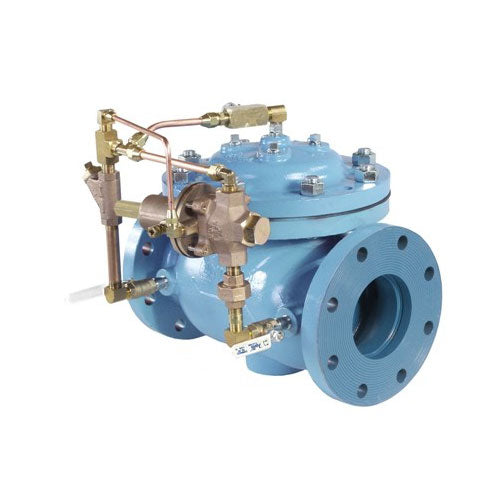Enhancing Functional Effectiveness with Advanced Control Valves
Enhancing Functional Effectiveness with Advanced Control Valves
Blog Article

Maximize Energy Financial Savings and Comfort With Advanced Structure Automation Controls
In the world of modern-day style and facility administration, the assimilation of advanced structure automation manages stands as an essential advancement. By using the power of automation, buildings can adjust, respond, and develop in means that were when inconceivable.
Power Efficiency Perks
Power efficiency benefits can substantially reduce power usage and operational prices in structures. Energy-efficient systems, such as sophisticated building automation controls, can optimize the usage of sources like cooling, home heating, and illumination, leading to lower power costs over time.
In addition, enhanced energy performance can prolong the life-span of structure equipment and systems. By running extra effectively, a/c systems, lighting components, and various other structure components experience much less wear and tear, resulting in lowered maintenance and replacement costs. Additionally, energy-efficient buildings frequently command higher residential or commercial property worths and rental rates, providing long-lasting economic advantages to proprietors.
Furthermore, power effectiveness can improve resident convenience and performance. Effectively managed indoor environments with ideal illumination and thermal problems produce a more helpful and enjoyable workspace, causing enhanced employee satisfaction and performance. In general, the power effectiveness advantages connected with advanced building automation controls are complex, incorporating price financial savings, ecological stewardship, and occupant well-being.
Improved Convenience Control
Enhancing convenience control in building settings needs a sophisticated assimilation of innovative automation systems for optimal occupant health. By utilizing sophisticated building automation controls, facilities can customize the interior atmosphere to meet the certain demands and choices of passengers. These systems enable exact policy of lights, temperature level, and air flow, creating a productive and comfy atmosphere. Resident complete satisfaction and efficiency are carefully linked to thermal comfort, making it important to have systems in position that can adjust to transforming conditions in real-time.
Boosted comfort control exceeds basic temperature level adjustments. It consists of attributes such as customized setups, occupancy sensors, and all-natural light use to develop a dynamic and receptive environment. By integrating these innovative controls, buildings can not just boost comfort however likewise boost power effectiveness by enhancing system operations based upon actual occupancy and usage patterns. Ultimately, focusing on owner comfort via innovative automation systems causes a much more satisfying and much healthier interior environment.
Functional Performance Improvements

Furthermore, the execution of real-time tracking and analytics devices enables structure drivers to identify power inadequacies and operational anomalies promptly. By continuously monitoring power usage patterns and system efficiency metrics, changes can be made in real-time to optimize power usage and make certain peak functional performance. control valves. Additionally, including demand action techniques right into structure automation controls can further improve operational performance by dynamically readjusting energy usage based on grid problems and pricing signals
Indoor Climate Optimization
Efficient indoor climate optimization is a basic element of building automation controls, making certain passengers' comfort and wellness while making best use of power financial savings. By utilizing innovative sensors and controls, developing automation systems can continually adjust and check temperature level, humidity degrees, air high quality, and air flow to create an ideal interior environment. Maintaining constant and comfy conditions not only boosts occupant satisfaction but additionally improves performance and general well-being.
Indoor environment optimization also plays a critical function in power effectiveness. By fine-tuning home heating, cooling, and air flow systems based on real-time data and occupancy patterns, developing automation controls can considerably reduce energy consumption - control valves. For example, carrying out strategies such as demand-controlled air flow and thermal zoning can assist decrease energy waste while making certain that each area of the building gets the required conditioning.

Sustainable Setting Production
Building automation manages not only optimize indoor climate problems for power efficiency and resident comfort however additionally lay the foundation for developing a sustainable environment through strategic monitoring of sources and systems. By integrating innovative building automation innovations, such as sensors, actuators, and intelligent software program, facilities can adjust and keep an eye on power usage in real-time to decrease waste and minimize their carbon footprint. These systems allow predictive maintenance, identifying potential concerns prior to they intensify and enhancing devices efficiency to improve long life check this and effectiveness.
Moreover, sustainable setting development prolongs past energy administration to incorporate water preservation, waste decrease, and indoor air top quality renovation. Building automation controls can regulate water use, spot leakages, and make sure appropriate garbage disposal practices, adding to general sustainability initiatives. Furthermore, by regulating and checking ventilation and filtering systems, these modern technologies improve owner health and performance while decreasing energy intake associated with a/c procedures.
Verdict
To conclude, advanced building automation manages deal considerable advantages in regards to power cost savings, convenience control, functional effectiveness, indoor climate optimization, and producing a sustainable atmosphere. By carrying out these controls, buildings this article can achieve ideal efficiency while decreasing power consumption and improving resident comfort. It appears that making use of sophisticated automation innovation is crucial in enhancing building efficiency and creating a more sustainable future.
Energy efficiency advantages can dramatically decrease energy consumption and functional prices in structures. In general, the energy effectiveness advantages connected with advanced building automation controls are complex, encompassing price financial savings, environmental stewardship, and owner well-being.
Furthermore, including demand response techniques into building automation controls can additionally improve operational efficiency by dynamically readjusting power usage based on grid problems and prices signals.
Structure automation regulates not just optimize indoor environment problems for power performance and passenger comfort but additionally lay the structure for producing a lasting setting via strategic management of resources and systems.In conclusion, advanced building automation controls offer significant benefits in terms of power cost savings, convenience control, functional efficiency, indoor environment optimization, and creating a lasting setting.
Report this page